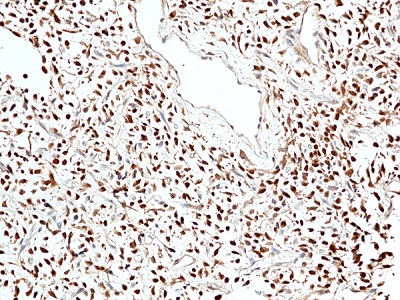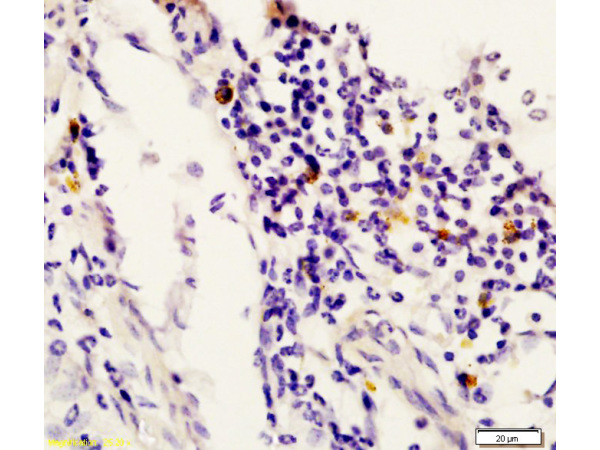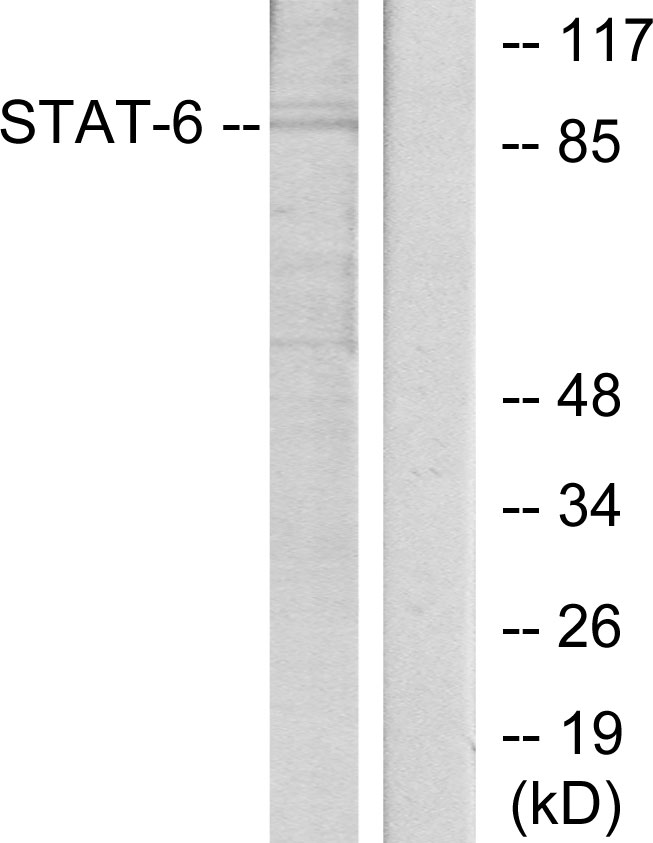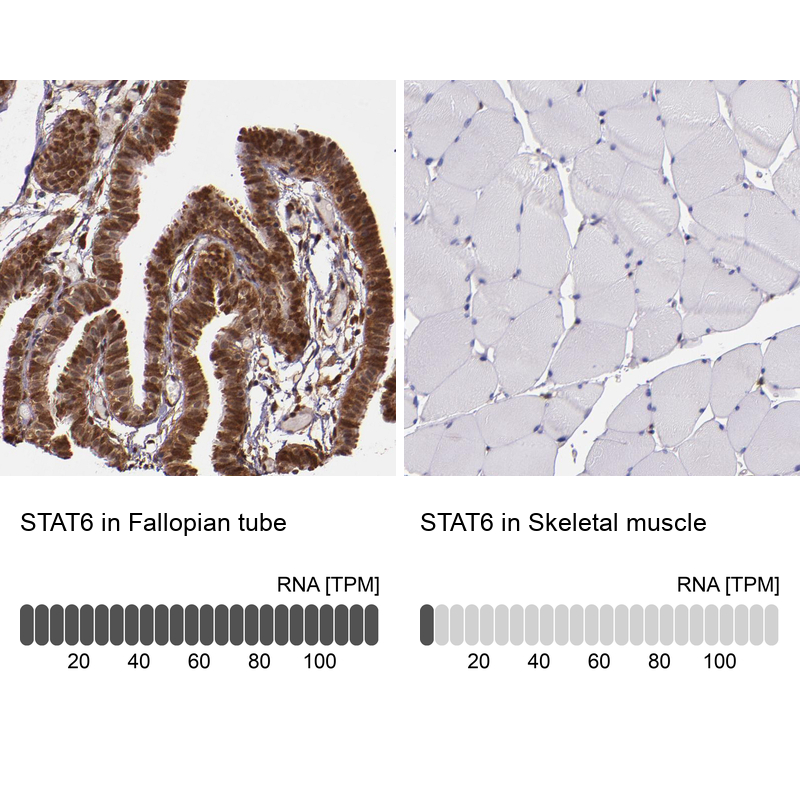
Immunohistochemical staining of formalin fixed and paraffin embedded human solitary fibrous tumor tissue sections using Anti-Stat6 antibody (RM473) at 1:100 dilution.
anti-Stat6, Rabbit Monoclonal (RM473)
REV-31-1365-00
ApplicationsWestern Blot, ImmunoHistoChemistry
Product group Antibodies
ReactivityHuman
TargetSTAT6
Overview
- SupplierRevMAb Biosciences
- Product Nameanti-Stat6, Rabbit Monoclonal (RM473)
- Delivery Days Customer10
- ApplicationsWestern Blot, ImmunoHistoChemistry
- CertificationResearch Use Only
- ClonalityMonoclonal
- Clone IDRM473
- Gene ID6778
- Target nameSTAT6
- Target descriptionsignal transducer and activator of transcription 6
- Target synonymsD12S1644, HIES6, IL-4-STAT, STAT6B, STAT6C, signal transducer and activator of transcription 6, STAT, interleukin4-induced, signal transducer and activator of transcription 6, interleukin-4 induced, transcription factor IL-4 STAT
- HostRabbit
- IsotypeIgG
- Protein IDP42226
- Protein NameSignal transducer and activator of transcription 6
- Scientific DescriptionRecombinant Antibody. RM473 reacts to human Stat6. Isotype: Rabbit IgG. Immunogen: A peptide corresponding to residues near the C-terminus of human Stat6. Applications: IHC, WB. Liquid. 50% Glycerol/PBS with 1% BSA and 0.09% sodium azide. STAT6 (Signal transducer and activator of transcription 6) is a transcription factor that belongs to the Signal Transducer and Activator of Transcription (STAT) family of proteins. The proteins of STAT family transmit signals from a receptor complex to the nucleus and activate gene expression. STAT6 is activated by the binding of interleukin-4 (IL-4) to its receptor. IL-4 is a cytokine that is produced by T cells, B cells, and mast cells. When IL-4 binds to its receptor, it triggers a series of events that lead to the phosphorylation of STAT6. Phosphorylated STAT6 then dimerizes and translocates to the nucleus, where it binds to DNA and activates the transcription of a number of genes. The genes that are activated by STAT6 play a role in a number of different biological processes, including Th2 cell differentiation, IgE production, eosinophil differentiation, mast cell activation and is involved in the development of some types of cancer. - STAT6 (Signal transducer and activator of transcription 6) is a transcription factor that belongs to the Signal Transducer and Activator of Transcription (STAT) family of proteins. The proteins of STAT family transmit signals from a receptor complex to the nucleus and activate gene expression. STAT6 is activated by the binding of interleukin-4 (IL-4) to its receptor. IL-4 is a cytokine that is produced by T cells, B cells, and mast cells. When IL-4 binds to its receptor, it triggers a series of events that lead to the phosphorylation of STAT6. Phosphorylated STAT6 then dimerizes and translocates to the nucleus, where it binds to DNA and activates the transcription of a number of genes. The genes that are activated by STAT6 play a role in a number of different biological processes, including Th2 cell differentiation, IgE production, eosinophil differentiation, mast cell activation and is involved in the development of some types of cancer.
- ReactivityHuman
- Storage Instruction-20°C
- UNSPSC12352203





